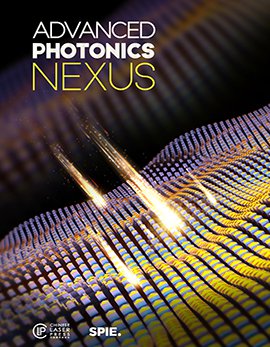Researchers from Tsinghua University and National University of Defense Technology achieved optical neural network by manipulating the mode coupling in a subwavelength etched structure within confined spaces.
.png)
The key feature of the multimode DONN is that light is confined within restricted spaces. In the study, a standard SOI multimode waveguide is used as the foundational structure, taking into account the coupling between transverse electric modes. The propagation of light is modeled as coupling between modes.
The diffractive optical neural network (DONN) has attracted extensive attention from researchers due to the significantly higher density of modulating units compared to some traditional devices. Passive modulating units manipulate the propagation of optical waves in the DONN. The computational processes are achieved through the diffraction and interference of light.
Recently, Prof. Hongwei Chen's research group from Tsinghua University and the research team from National University of Defense Technology jointly published the work of multimode diffractive optical neural networks in the Advanced Photonics Nexus journal, introducing a novel optical diffraction computing structure that incorporates modulating units into confined spaces. The key distinction from previous research lies in the constraint of light propagation in confined space. The previous work needs to ensure a longer distance between the hidden layers to establish the approximation conditions, and the light reflection at the spatial boundaries introduces complex factors for diffraction-based analytical methods. By contrast, this work effectively solves the above problems, and the more compact computational space also effectively controls the energy dissipation between the modulating structure layers.
Researchers opted for an alternative modeling approach, namely the eigenmode analysis method. Within confined spaces, the modulating layer forms a mode coupling structure, where multiple modes undergo coupling after passing through the modulating layers. This coupling behavior is described by a mode coupling matrix. Similarly, input and output structures are modeled as coupling rules between ports and modes.
By simply continuously multiplying the mode coupling matrix, the linear port-to-port transmission matrix of the entire DONN can be quickly and accurately obtained. Based on the standard SOI structure, a set of modulating layers is constructed through a binary design scheme in the multimode waveguide. Through simulation demonstration, the coupling process of the transverse electric modes in these structures is described by the mode coupling matrix. By selecting the most suitable structures and combining them, the multimode DONN is applied to tasks such as iris flower classification and one-bit adder. It exhibits advantages in terms of power consumption and footprint compared to the structures previously investigated.
For detailed information on the article, please click on the link below.
Multimode diffractive optical neural network (spiedigitallibrary.org)


